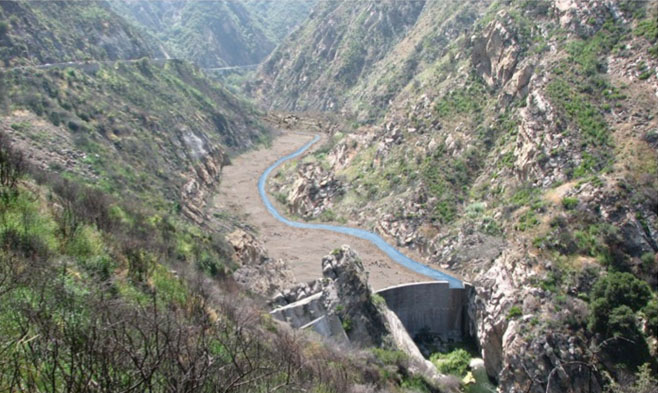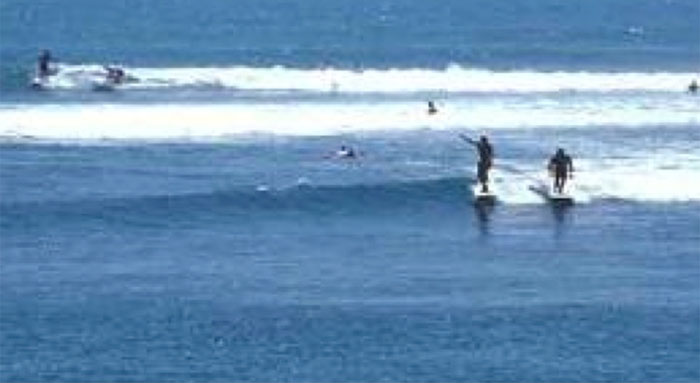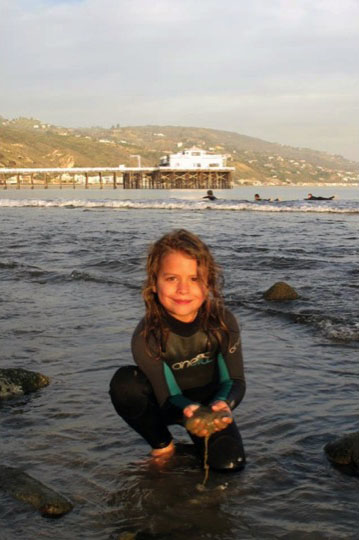Why the Feasibility Study Indicates Dam Removal is the Preferred Alternative
There are three key reasons why removing Rindge Dam and other smaller “in-stream” barriers is listed in the study as the preferred alternative to restore the ecosystem health of Malibu Creek watershed, quality of life for area residents and regional economy.


Southern steelhead trout (left) only have access to three miles of their 60+ miles of historic habitat in Malibu Creek watershed. Habitat for western pond turtle (right) and other species is impacted. (Courtesy of the Resource Conservation District of the Santa Monica Mountains)
-
1. Reconnecting Natural Waterways and Protecting Wildlife Corridors and Habitat
Waterways are the life-blood of natural ecosystems. The study indicates that removal of in-stream barriers would reconnect the Malibu Creek corridor and restore riparian (creek/lagoon) habitat benefitting sensitive aquatic animals such as the endangered southern California steelhead trout, and protect animal movement corridors. By restoring Malibu Creek’s natural hydrology, the preferred alternative would protect the rare biological diversity present, and improve the related aesthetic, recreational and economic values.Additionally, Malibu Creek is a key wildlife linkage within the Santa Monica Mountains. Other important sensitive species use Malibu Creek for habitat and wildlife movement corridors. These include the least Bell’s vireo, western pond turtle, California red-legged frog, two-striped garter snake, Pacific tree frog, and mountain lion, among others.

Visualization of the dam halfway removed. Topography of the area behind the dam is currently artificially elevated 100 feet above the natural grade.
Roughly 780,000 cubic yards of material are trapped behind the dam, material that otherwise would move downstream to replenish beaches and surf breaks.
The impounded sediment extends almost one mile upstream (roughly to the roadway in the background). (Courtesy California State Parks, 2016).
-
2. Sand for Beaches, Stone for Surf Breaks
Dams block natural sediment from moving downstream. Removing man-made barriers restores this natural cycle for beaches and nearshore habitats, and maximizes local reuse of sediments trapped behind the dam.An estimated 780,000 cubic yards of sediment is trapped behind the dam, resulting in unnatural creek morphology extending almost one mile upstream behind the dam. The harm on areas downstream of the dam extends three miles to the beach and beyond. The natural sediment cycle of boulders, cobble, and ultimately sand and silt moving downstream and onto area beaches and surf zones, has been blocked.
Sediment starved beaches are shrinking as sand is carried away by surf and not replenished. This reduces natural barriers and protections for beachfront properties such as the historic Adamson House. The retreating sand requires costly requiring artificial barriers, seawalls and repairs to protect beachfront property.
Surfrider Beach, in particular, has been designated as a Beach Erosion Concern Area (BECA, 2010) for its lack of width/elevation to serve recreational demand and protect upland facilities. There are three simultaneous surf breaks at the world-famous Surfrider Beach, which receives an estimated 2.5 million visitors per year. Cobble, sand and other material washing downstream from Malibu Creek to form underwater bars are key to the area’s surf and the recreation it provides.
The study outlines how removal of Rindge Dam would restore a more natural sediment cycle in the lower Malibu Creek watershed. Natural sediment flow benefits beaches, surf, and offshore environments, as does the associated regional economy.


Eroding beach at Broad Beach (left) and repairing storm damage at the historic Adamson House (right) at the Surfrider Beach, 2012. Surfrider Beach, in particular, has been designated as a Beach Erosion Concern Area (BECA, 2010) for its lack of width/elevation to serve recreational demand and protect upland facilities. (Courtesy California State Parks, 2016)

Well-nourished beaches support high quality recreation. (Photo Courtesy of Nancy Hastings)
-
3. Improve Public Safety
The dam is an attractive nuisance for those who seek to jump from, climb on, or graffiti on the dam. Despite the area being posted off-limits - enforceable by fines - and patrolled, thrill seekers still find their way to the dam. There is concern from responsible agencies about the recent rise in policing unsafe activities at the dam site.In recent years there have been a number of serious injuries and fatalities associated with this dangerous behavior at the dam. This also results in rescue operations that are dangerous for first responders and costly for local agencies. Human activities in the area of the dam also create environmental damage including illegal trails and discarded trash and waste.

Recreational divers at Rindge Dam pose a significant safety concern. Photos courtesy of Jeff Edwards, Otis College of Art and Design, Los Angeles (left).

Rindge Dam has been filled since the 1950s with sediment, and has no value for water storage. The dam can overtop in severe runoff. (Courtesy USACE)

Well-nourished beaches support high-quality recreation.
(Photo Courtesy of Nancy Hastings)
